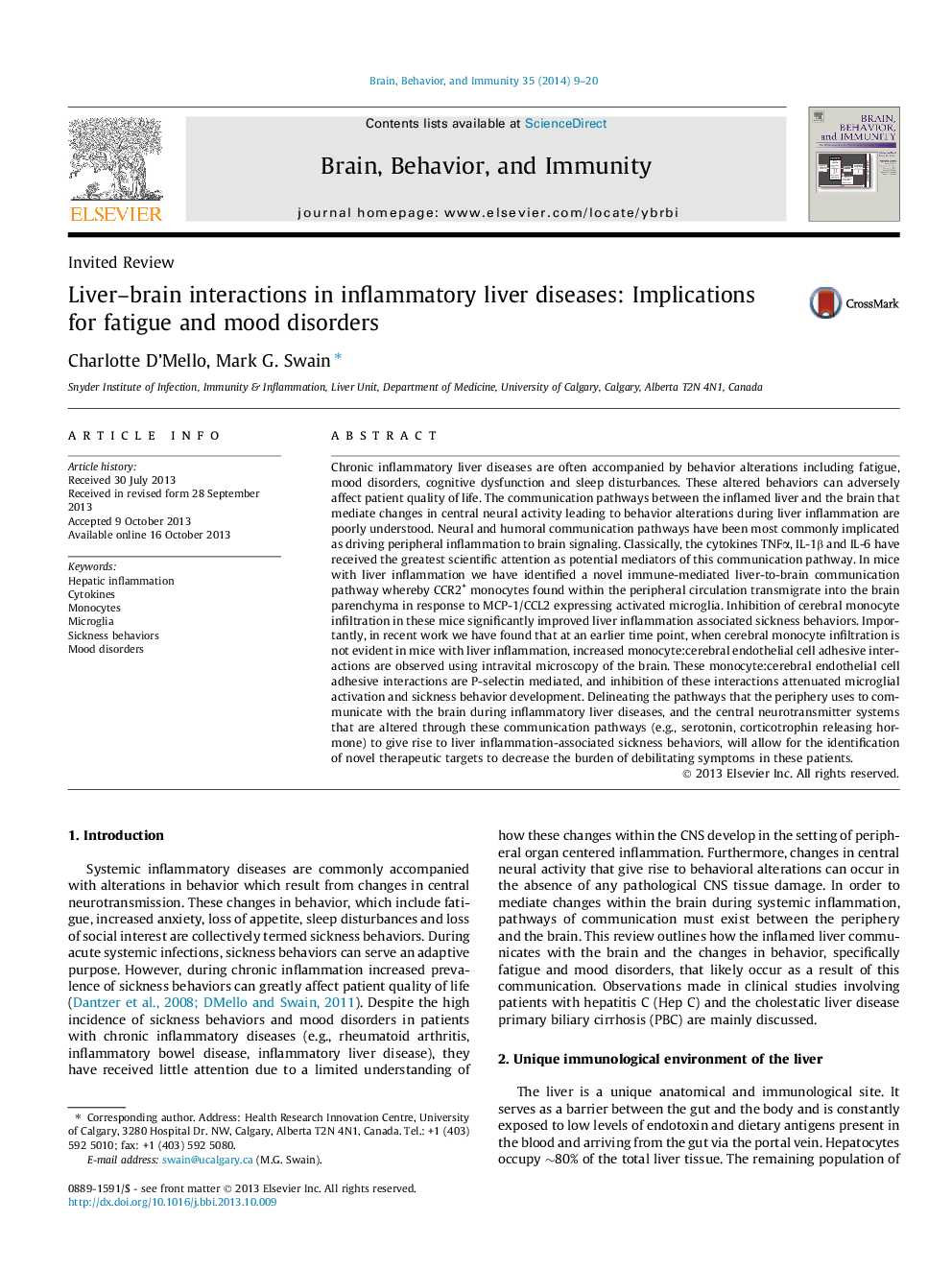| کد مقاله | کد نشریه | سال انتشار | مقاله انگلیسی | نسخه تمام متن |
|---|---|---|---|---|
| 7281685 | 1473932 | 2014 | 12 صفحه PDF | دانلود رایگان |
عنوان انگلیسی مقاله ISI
Liver-brain interactions in inflammatory liver diseases: Implications for fatigue and mood disorders
ترجمه فارسی عنوان
تعاملات مغز و کبد در بیماری های التهابی کبدی: پیامدهای خستگی و اختلالات خلقی
دانلود مقاله + سفارش ترجمه
دانلود مقاله ISI انگلیسی
رایگان برای ایرانیان
کلمات کلیدی
التهاب کبدی، سیتوکین ها، مونوسیتها، میکروگلایا، رفتارهای بیمار، اختلالات خلقی،
موضوعات مرتبط
علوم زیستی و بیوفناوری
ایمنی شناسی و میکروب شناسی
ایمونولوژی
چکیده انگلیسی
Chronic inflammatory liver diseases are often accompanied by behavior alterations including fatigue, mood disorders, cognitive dysfunction and sleep disturbances. These altered behaviors can adversely affect patient quality of life. The communication pathways between the inflamed liver and the brain that mediate changes in central neural activity leading to behavior alterations during liver inflammation are poorly understood. Neural and humoral communication pathways have been most commonly implicated as driving peripheral inflammation to brain signaling. Classically, the cytokines TNFα, IL-1β and IL-6 have received the greatest scientific attention as potential mediators of this communication pathway. In mice with liver inflammation we have identified a novel immune-mediated liver-to-brain communication pathway whereby CCR2+ monocytes found within the peripheral circulation transmigrate into the brain parenchyma in response to MCP-1/CCL2 expressing activated microglia. Inhibition of cerebral monocyte infiltration in these mice significantly improved liver inflammation associated sickness behaviors. Importantly, in recent work we have found that at an earlier time point, when cerebral monocyte infiltration is not evident in mice with liver inflammation, increased monocyte:cerebral endothelial cell adhesive interactions are observed using intravital microscopy of the brain. These monocyte:cerebral endothelial cell adhesive interactions are P-selectin mediated, and inhibition of these interactions attenuated microglial activation and sickness behavior development. Delineating the pathways that the periphery uses to communicate with the brain during inflammatory liver diseases, and the central neurotransmitter systems that are altered through these communication pathways (e.g., serotonin, corticotrophin releasing hormone) to give rise to liver inflammation-associated sickness behaviors, will allow for the identification of novel therapeutic targets to decrease the burden of debilitating symptoms in these patients.
ناشر
Database: Elsevier - ScienceDirect (ساینس دایرکت)
Journal: Brain, Behavior, and Immunity - Volume 35, January 2014, Pages 9-20
Journal: Brain, Behavior, and Immunity - Volume 35, January 2014, Pages 9-20
نویسندگان
Charlotte D'Mello, Mark G. Swain,
